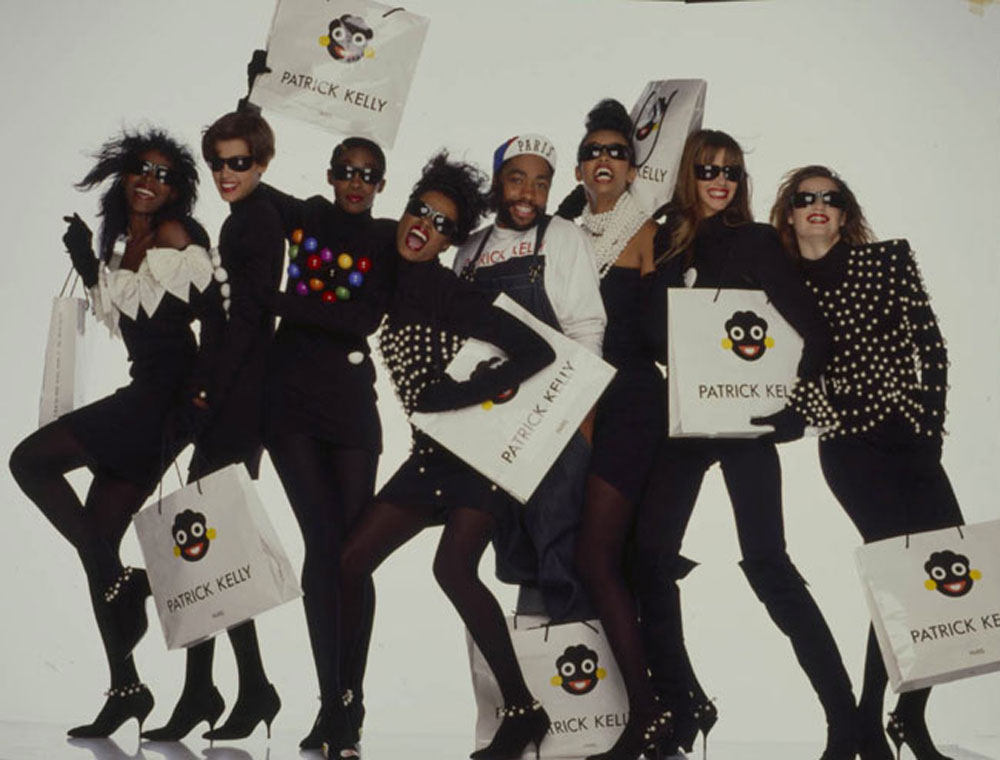

Good Morning POU! We could not leave out designer extraordinaire Patrick Kelly!
In 1998, Patrick Kelly became the first American designer accepted into the Chambre Syndicale du Prêt-à-porter in Paris, the prestigious French ready-to-wear association. After college, Kelly moved to Atlanta to work as a window dresser at the Yves Saint Laurent Rive Gauche boutique. Supermodel Pat Cleveland encouraged Kelly to move to Paris in 1980.
Initially, Kelly struggled in Paris, freelancing for Paco Rabanne and making clothes for nightclubs to get by. His big break came when he became the first American designer sold in French boutique Victoire. This led to a feature in ELLE France and his first show in 1985. Kelly’s pieces were beloved by Grace Jones, Madonna, and Princess Diana. He was known for his bright and bold garments, flashy body-con dresses, big buttons, and loud prints. Above all, Kelly was influenced by Black culture: “In one pew at Sunday church in Vicksburg, there’s more fashion to be seen than on a Paris runway.”

Kelly sought inclusiveness in the clothes he designed, telling People Magazine in 1987, “I design for fat women, skinny women, all kinds of women. My message is, you’re beautiful just the way you are.” At his March, 1987 show, one of his models was eight months pregnant.
As a Black man designing couture collections with Black women in mind, he was an anomaly. With a background in African history. Kelly was an avid collector of Black memorabilia, with an affinity for items depicting racial stereotypes that many people find challenging, offensive or demeaning. He deployed this material ironically in his designs, which feature cartoonish watermelon wedges, black baby dolls, bananas and golliwogs, among other images.

Kelly used his brand as a way to confront racism by reclaiming symbols of Black oppression, such as the blackface he used as his logo. U.S. retailers refused to buy anything with this logo and his investors asked him to stop using it altogether.

By 1989, Kelly was at the height of his success, producing his line for Warnaco in addition to other contracts—including one for Benetton—while developing plans for lingerie, perfume and menswear lines. That August, Kelly became ill and was unable to complete preparations for his October show, which soon resulted in the cancellation of his Warnaco agreement. Kelly was sick with AIDS, but the hope of his partial recovery and business considerations kept the nature of his illness secret until after his death. Kelly died on January 1, 1990, survived by Amelan and his mother. At Kelly’s memorial service, his friend and client Gloria Steinem concluded her remarks by saying, “Instead of dividing us with gold and jewels, he unified us with buttons and bows.” Kelly is buried in the 50th division of Paris’s Père-Lachaise cemetery.

